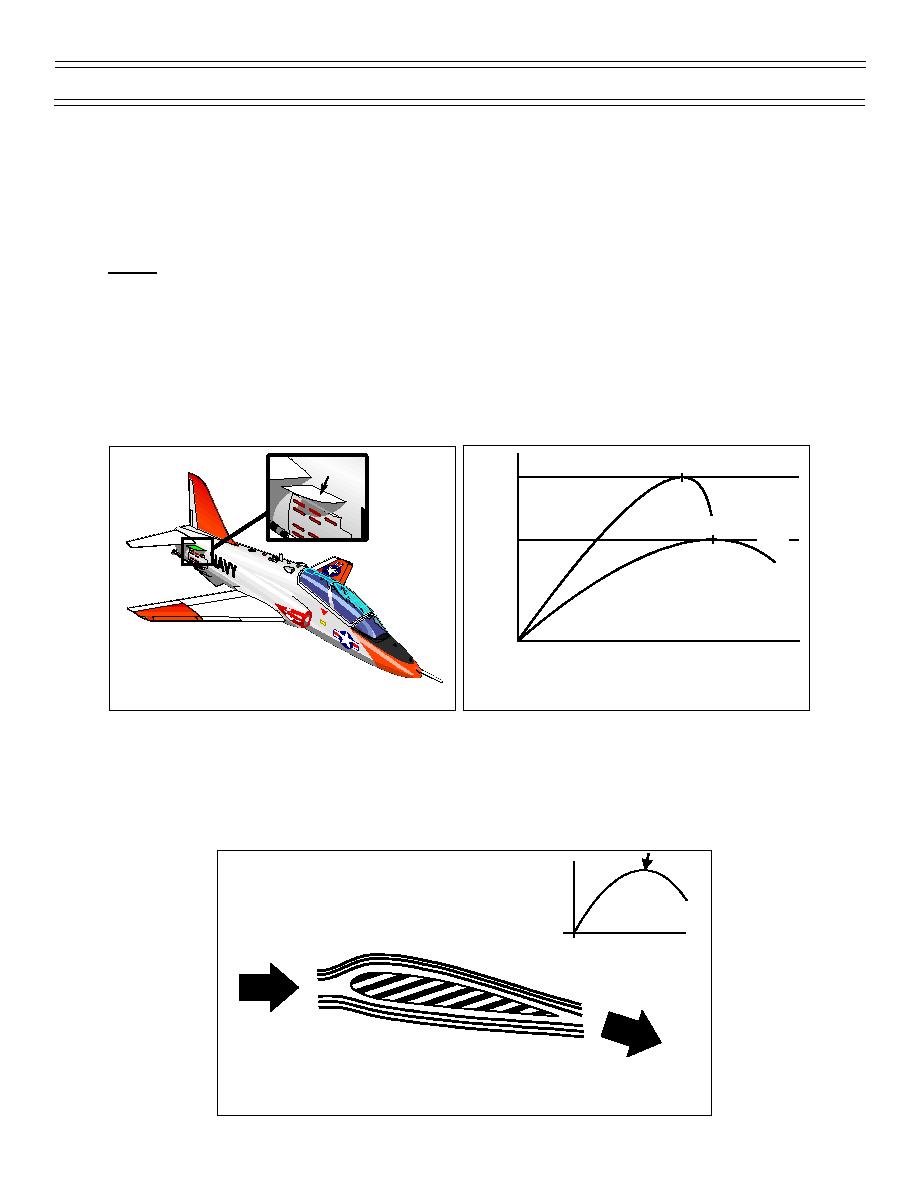
Aero Chapter 03, High AOA/Stall/Spin
T-45 Aerodynamics Student Workbook
STABILATOR VANES
A stabilator vane (strake) is located on both sides of the fuselage above the speed brakes (Figure 54).
The vanes generate a vortex, which passes below the stabilator and keeps the stabilator effective by
energizing the airflow, especially at maximum leading edge down stabilator deflection. The stabilator
vane also helps maintain the flow pattern over the stabilator when the speed brakes are extended.
STALL
Stall is defined as a condition of flight in which any increase in angle of attack (AOA) will result in a
decrease in coefficient of lift (CL). Stalling angle of attack is the AOA on an airfoil at which stall
commences. This point occurs at the maximum coefficient of lift or CLmax. Beyond this angle of attack,
the boundary layer is increasingly unable to remain attached to the wing, resulting in a continuing
decrease in CL.
The swept wing aircraft generates less CL and stalls at a higher AOA than a straight wing aircraft. The
stall is also less dramatic as shown by the flatter curve (Figure 55).
STABILATOR
(CL) max
VANE
STRAIGHT
WING
(CL) max
(CL)
SWEPT
WING
Coefficient
of Lift
Angle Of Attack (AOA)
Figure 55: COEFFICIENT OF LIFT CURVE,
Figure 54: STABILATOR VANES
STRAIGHT WING VS SWEPT WING
STALL WARNING
Stall occurs when an increase in AOA produces a reduction in CL (Figure 56). The maximum lift
coefficient of a particular wing configuration is obtained at one angle of attack. Weight, bank angle, load
factor, density altitude, and airspeed have no direct effect on the stall angle of attack of the wing. Note
that some indirect effects may show up with large changes in the cited measures.
CL
AOA in Degrees
AIRFLOW
DOWNWASH
Figure 56: AERODYNAMICS OF A STALL
(7-99) Original
Page 32



 Previous Page
Previous Page
